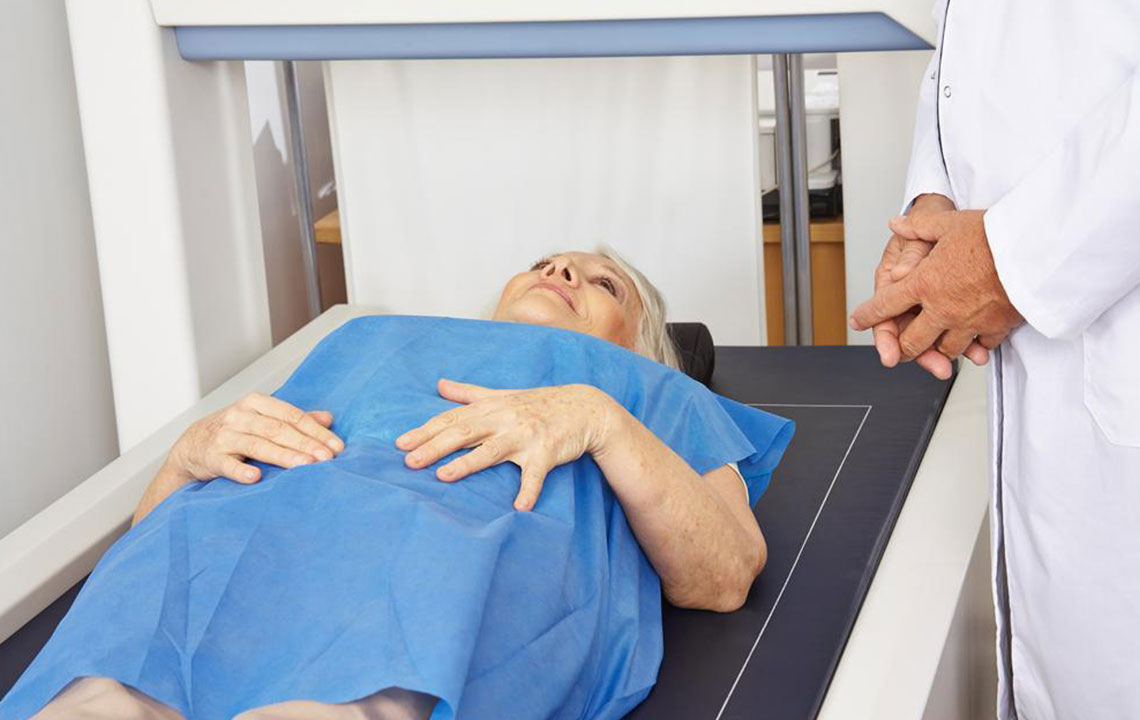A Brief Overview of the Bone Density Test
A bone density test is done to check whether you have osteoporosis or not. Osteoporosis is a disease of the bone which causes them to become fragile and susceptible to damage easily. Previously, osteoporosis could only be detected after the patient has broken a bone. However, by the time it was found out, it was already very late as the bones become quite weak. A bone density test accurately determines how susceptible you are to breaking bones. The bone density test uses X-rays to determine the amount of calcium and other bone minerals in grams present into a particular area of the bone.

Why is the bone density test conducted?
Doctors conduct bone density test to:
– Monitor the treatment of osteoporosis.
– Identify any decrease in bone density and prevent the advancement before one has a broken bone.
Your bones are believed to be denser and less likely to break when you have high mineral content in your bones. It must be noted that bone scans and bone density tests are completely different things. Bone scans are characterized by injections being administered to patients before the procedure, and it is done to detect cancer, fractures, infections and other bone abnormalities.
Osteoporosis is more common to women especially elderly people. However, osteoporosis in men is not uncommon at all. Regardless of your age and gender, your physician may suggest you a bone density test if you have:
Lost height: People with underlying osteoporosis have experienced a loss of height. Osteoporosis causes compression fractures in the spines causing people to lose 4 cms in height generally.
Fractured a bone: Fragility fracture is a term used to describe the situation when the bones become so weak that they break very easily. People may have broken bones due to a strong sneeze or a cough.
Taken certain medicines: Use of steroid drugs like prednisone for a longer time meddles with the rebuilding process of the bone resulting in osteoporosis.
Received a transplant: All those who have undergone bone-marrow transplant or received an organ are more prone to get osteoporosis. This is because anti-rejection medications interfere with the rebuilding process of the bones.
Experienced a drop in the hormone levels: Female hormones drop after menopause, which is quite natural. However, estrogen levels may also drop if the person is undergoing cancer treatments. Treatments for prostate cancer result in a decline in testosterone levels in men. It is to be noted that decline in the levels of sex hormones result in weakening of bones.
Risks
Limitations of bone density tests include the following.
The difference in various testing methods: Central devices measure the density of hip bones and spines and are more accurate but cost a hefty amount. The peripheral devices measure bone density in the finger, forearm, or heel bone. They cost less but do not give an accurate result.
May not be covered by insurance: Bone density tests are not covered by all insurance companies. You must ask your insurance company beforehand regarding the same.
Cannot identify the reason: Bone density tests may confirm if you have low bone density or not, but it cannot tell you the reason. To get answers to this question, you need to get more medical examinations done.
Preparing for the test: The best thing about bone density tests is that they are painless, fast, and easy. There is no need to prepare yourself in a certain way for the tests. In fact, some form of tests can be conducted in your local drugstore or pharmacy. In case you are going for the tests at a hospital or medical center, tell your doctor if you have had a contrast material injected for a CT scan, barium exam, or undergone the nuclear medical test. Contrast materials sometimes interfere with the test.
Things expected when getting a bone density test done
Bone density tests are performed on bones which are most susceptible to breaking due to osteoporosis, including:
– Lumbar vertebrae
– Bones in your forearm
– Femur
If you are scheduled to get the bone density done at a hospital, it would be done on a central device probably. Here you would lay down on a padded platform and a mechanical arm would pass over your body. You would be exposed to a bare minimum amount of radiation, lesser than radiation emitted during a chest X-ray. The duration of the test ranges from 10 to 30 minutes.
Then there are peripheral devices which are small and portable machines used to measure the density in the bones of the far ends of your skeleton, like that of fingers, wrists, and heels. This can be done in pharmacies. This one is less expensive than getting the test done on a central device in a hospital.

